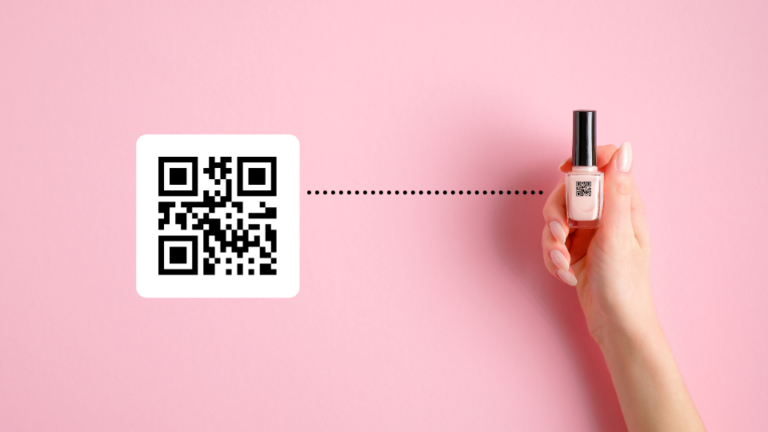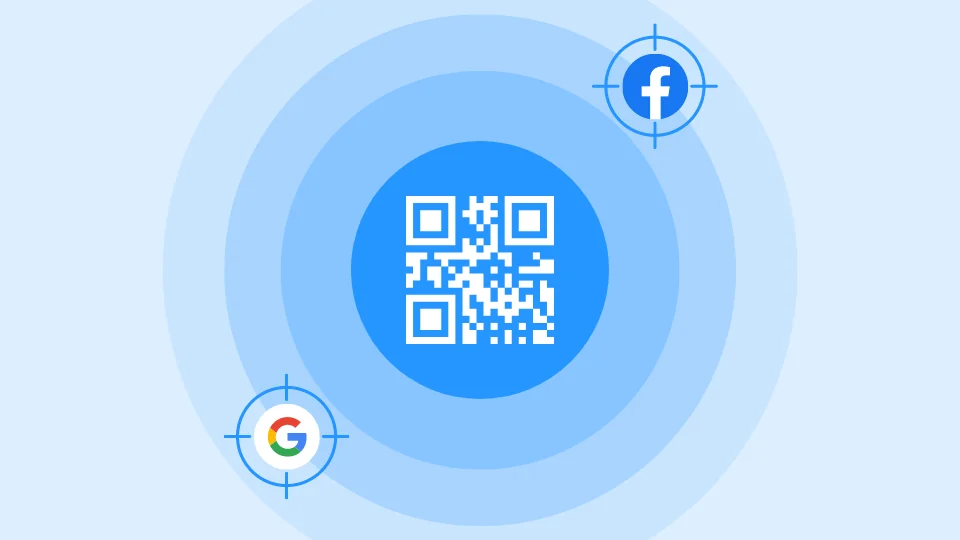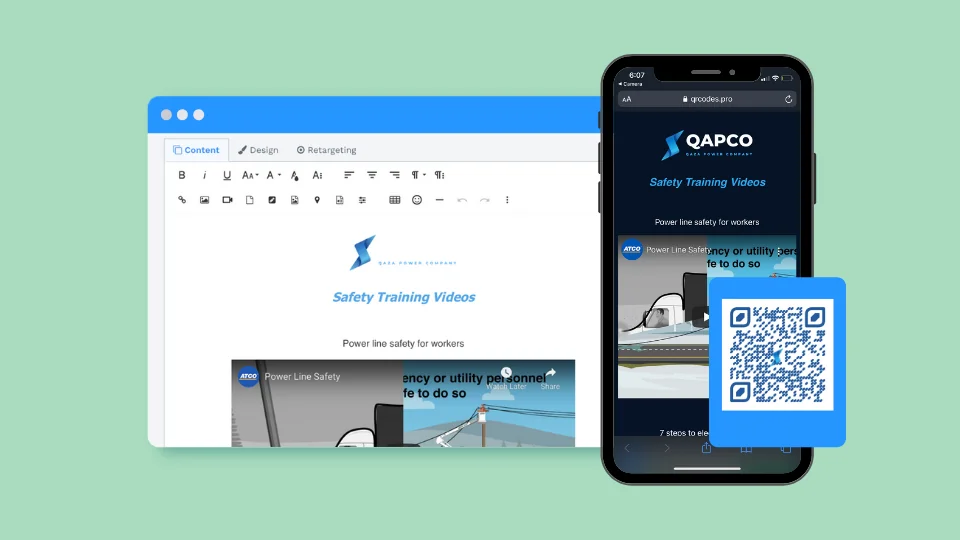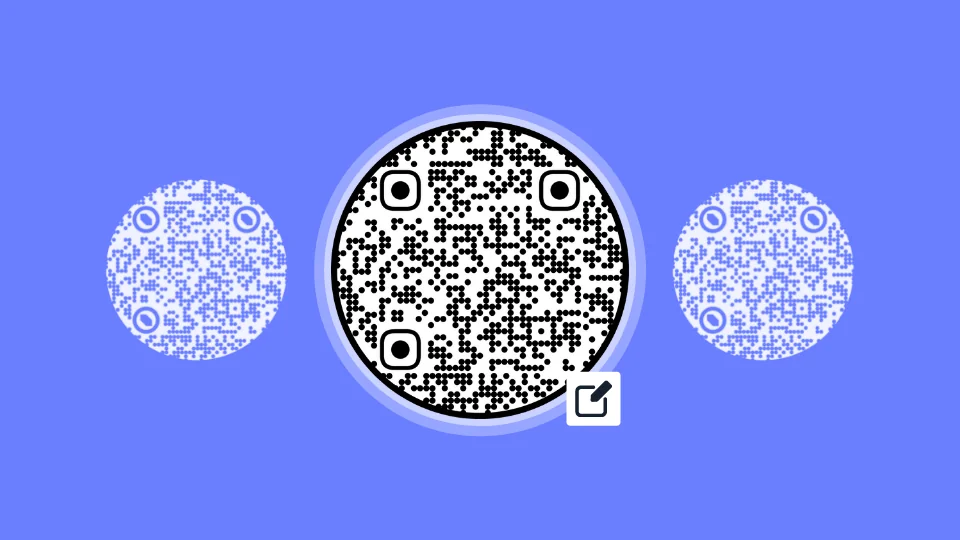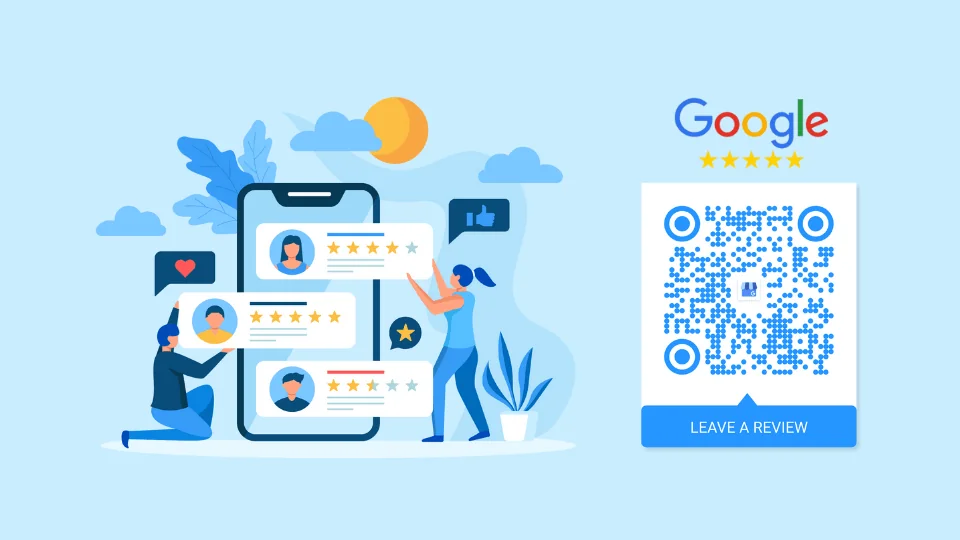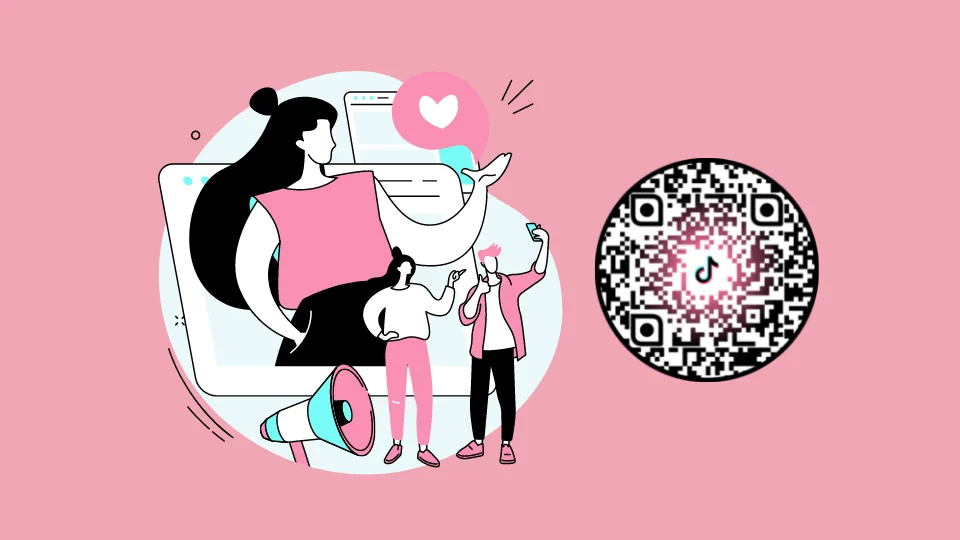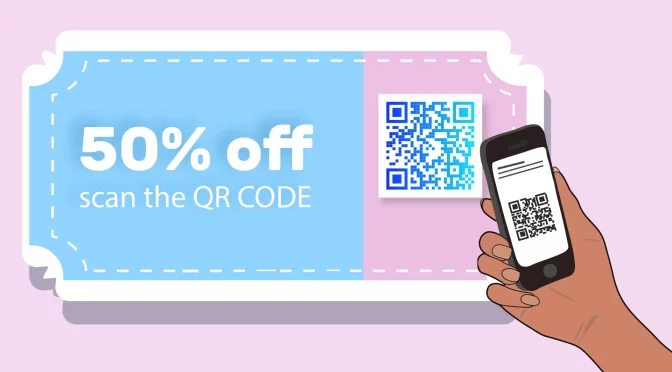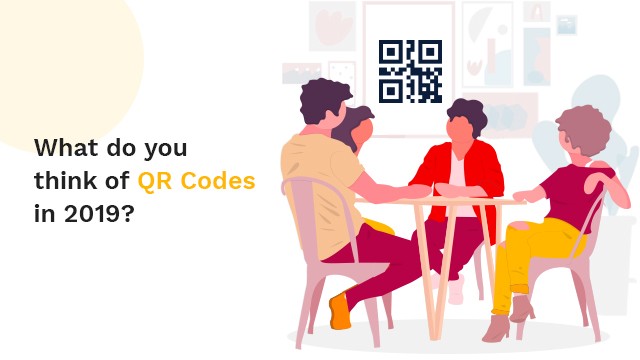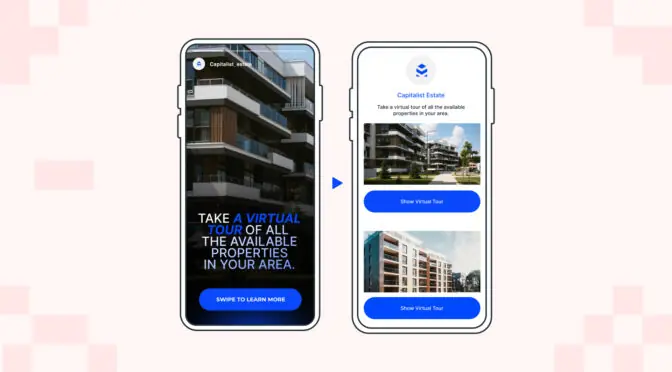According to Allied Market Research’s report, the global cosmetics market is expected to reach $463.5 billion by 2027.
This proves that beauty products will never lose relevance. It’s a fast-moving industry with continuous high demand from consumers worldwide.
Due to the rise of technology over the past decade, traditional marketing strategies don’t make the cut anymore. Beauty brands need to adopt more innovative methods to reach their target market and make an impact.
Consumers are now more well-informed, curious, and willing to try new beauty products and brands that cater to their needs more.
Incorporating a technology like QR Codes for beauty brands helps them upgrade their existing marketing strategy or build a new one from scratch based on their requirements.
Not to mention that it meets the needs of the mobile-first consumer market.
QR Codes for beauty brands form a bridge between the physical and digital experiences and streamline processes in a frictionless manner.
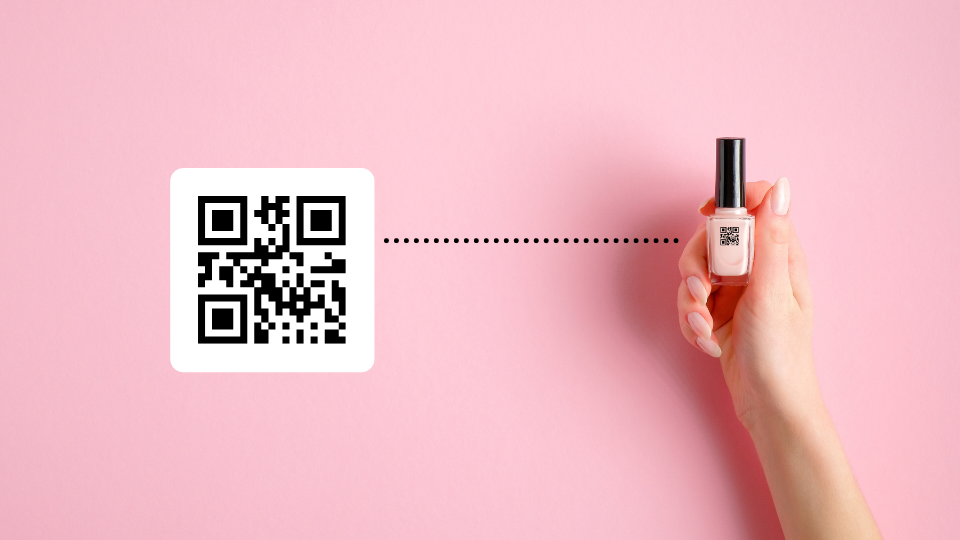
7 ways to market beauty products with QR Codes
#1. Adopt QR Codes for beauty samples to drive full-size product purchases

Beauty samples are a gateway to get consumers to try your product. They’re either handed out at stores or given away as freebies along with your purchase.
Some brands like Smashbox, Kat Von D Beauty, and Drunk Elephant even let consumers buy beauty samples from their websites.
Beauty samples are the third-largest driver to purchase full-size products.
During this stage of the consumer buying process, when the consumer is new to exploring your product, it’s best to provide all the relevant information to help them better understand your product and brand.
Since there’s limited space on a beauty sample’s packaging, add a QR Code that links to a landing page or PDF displaying the ingredients along with its skin benefits.
Let’s say you’re sharing samples of your brand’s latest facial serum. You can use a website or PDF QR Code on the beauty product to share information regarding how your product is hypoallergenic, how much collagen it contains, and other essential information to help the consumer make an informed decision.
Moreover, if your consumer really enjoyed the sample, use a QR Code to direct them to your online store to purchase the full-size product.

Besides sharing details of ingredients, you can also compare your product versus competitor brands to prove how it stands out. You can also prompt consumers to scan and sign up for your website’s newsletter or follow your brand on social media.
With QR Codes on beauty products, there is no limit to the amount of information you can share with consumers.
#2. Make your print & TV commercial campaigns actionable using QR Codes for beauty brands

Print media
According to INMA’s research, 82% of consumers have reported that they trust print ads.
Brands like L’Oreal thrive on print media advertising. According to an article by Women’s Wear Daily, the brand spent $683.7 million on print advertising in magazines in 2018.
So it’s safe to say that print media is a viable channel for marketing your beauty brand even in 2021.
Also read: How to create a QR Code for a magazine
Television commercials
According to Marketing Charts’ report, TV commercial spend will grow up to $74 billion by 2022.
Television commercials are one of the most promising channels for advertising your beauty products. It’s low-risk and has a wide reach.
With over 3.8 billion smartphone users worldwide, incorporating technology like QR Codes into your print media and TV commercials helps attract these users and gain significant traction.
Use a website QR Code on billboards, flyers, posters, and TV commercials to drive traffic to your website. Utilize coupon QR Codes to let consumers avail the best deals and offers from your brand.
Here are a couple of more ideas you can try out:
- Use video QR Codes to let consumers access helpful tutorials while they’re flipping through pages of a magazine or flipping channels.
- Add an actionable frame text to your QR Codes to nudge consumers to scan it.
- This helps build awareness for your beauty brand and gets the word out.
- For instance, let’s say you just launched a new branch of your store. To get more consumers to visit, add a location QR Code at the end of your TV commercial to let consumers scan and get the directions quickly.
- Add an incentive such as a 15% discount for the first 50 customers. This grabs consumers’ attention, makes your TV commercial more action-driven, and increases the number of footfalls to your store.
- As you scale up and launch more store branches, you can create location-specific dynamic QR Code ad campaigns for each branch.
- This way, you get to monitor multiple store locations and figure out which one is gaining the highest amount of foot traffic.
#3. Improve your ongoing advertisements with first-party data from QR Codes on beauty products

A large number of beauty brands depend on third-party retailers like Amazon, Flipkart, Sephora, and Ulta Beauty, to name a few.
Often, these brands don’t get access to consumer data based on purchases, which creates a roadblock for understanding consumer preferences and behavior.
According to Google’s and Econsultancy’s report, 92% of leading marketers believe using first-party data to understand what people want is critical to growth.
Include a QR Code on your beauty products. When consumers purchase your product and scan the code, you’ll acquire data such as the number of scans, locations, and devices used.
The great thing about this is that you’re collecting brand-owned data that’ll help you understand your consumers better.
After assessing the QR Code campaign performance, optimize your listing on those third-party retailer websites to cater to your consumers better and drive repeat purchases.
Moreover, a dynamic QR Code on beauty products can switch between various campaigns – be it a tutorial, an AR experience, or a beauty quiz. So, you get to attain consumer data and engage your consumers after they purchase your product.
This will turn first-time buyers into loyal consumers and improve your overall branding.
Added tip – The first-party data from QR Codes on beauty products also comes in handy for retargeting consumers. Let’s say you used a website QR Code for your beauty brand to link to a specific blog that promotes it.
You can analyze your website data to see how many website visitors engaged with the blog, clicked on the call-to-action button, and how many bounced off.
Based on the data, you can retarget those bounced visitors via Facebook, Google Ads, or any other medium so that you don’t miss out on those potential consumers.
#4. Users bring more users: Employ QR Codes for beauty brands to promote user-generated content in-store

Since the advent of e-commerce, online reviews started gaining popularity and relevance on retailer websites, especially for beauty products.
According to Yotpo’s beauty report, 44.7% of consumers say customer reviews are most influential in getting them to make a purchase.
This is the power of user-generated content and its impact on the beauty industry.
Consumers indeed take to the internet for reviews before buying a beauty product. But what if there was a way to take things up a notch and make those reviews readily available in-store? At a time when consumers would need it most?
Having a QR Code on beauty products that, upon scanning, takes consumers to the online reviews of that specific product adds value to the retail experience.
It also rids consumers of the hassle where they need to search for the product online, navigate to the website, and read the reviews.
This minor upgrade to your beauty packaging goes a long way in establishing your brand’s authenticity and building trust with your consumers.
Suppose a consumer is looking for a skincare product that helps with their acne. They’re strolling through the aisle and feel overwhelmed with the varieties of brands available.
To make your product stand out from the rest, add a QR Code on your beauty product with a frame text that says “Scan for popular reviews”. On scanning, the consumer will see reviews of how your product has helped other consumers battle their acne, coupled with before and after pictures.
This eases their concerns and helps them make a quicker and better purchase decision. Not to mention, it builds up your brand’s credibility.
Added tip – To get consumers to provide feedback after they’ve used your product, have the QR Code link to a landing page with two options:
- Leave a review and get 10% off on the next purchase
- Read consumer reviews
If it’s a new consumer, they can select the second option. If it’s a loyal consumer, they can select the first. This hits two birds with one stone – acquiring new consumers and rewarding loyal ones.
Check out: Find out how a Google review QR Code can help your beauty brand
#5. Build a well-knit tribe with loyalty programs using QR Codes for beauty brands

According to Bond’s loyalty report, 70% of consumers are more likely to recommend a brand with a good loyalty program.
Traditional loyalty programs involve filling out a form at the billing counter and a long wait to receive your membership card.
You can make this whole process so much easier and hassle-free with QR Codes.
Add a QR Code at billing counters so that consumers can scan, swiftly enter their details on their smartphone, and instantly become a member.
You can also add a QR Code on your beauty products so they can scan and join when they reach home or at any given time.
This gives them the benefit of independently signing up on their own, at their convenience.
Digitizing your brand’s loyalty program appeals to your mobile-first audience.
Bond’s loyalty report also indicates that 63% of consumers say they’re prepared to modify their spending habits to maximize a loyalty program’s benefits.
This calls for enhancements to your loyalty program’s various touchpoints where QR Codes make the whole experience seamless.
For instance, let’s say a consumer just earned 3000 points from their purchases and is eligible for an exclusive in-store beauty masterclass. You can add a QR Code to their invoice, which lets them access their unique VIP ticket upon scanning. You can also password-protect the QR Code for added security and privacy.
Providing these personalized brand experiences to your loyal consumers leads them to advocate for your brand and increase positive word of mouth.
#6. Leverage QR Codes for beauty brands to increase engagement at trade fairs and exhibitions

Trade fairs and exhibitions open up the perfect opportunities to showcase your beauty products, interact with potential consumers, and network with industry partners.
To up the engagement levels at these events and attain more traction to your stalls, use QR Codes at every step, from an attendee finding your booth to communicating with your brand.
Trade shows happen at large venues, making it difficult for attendees to navigate and find your stall. Add a location QR Code to flyers at the entrance for attendees to scan and get directions to your stall.
Once they reach your stall, add an extra layer of engagement by adding QR Codes to the beauty products. Attendees can scan to access more detailed information about the product, helpful tutorials, and view your social media profiles.
You can even use app download QR Codes to get attendees to download your brand’s app and unlock exclusive content.
Another great feature for your stall would be a feedback QR Code where attendees scan to provide valuable feedback after using your product and receive free samples as rewards.
These initiatives require the least amount of effort from the attendee’s end, thus creating an impactful and memorable brand experience. It helps your brand stand out from the crowd and acquire new consumers.
#7. Strengthen online communities for brand advocacy using QR Codes for beauty brands
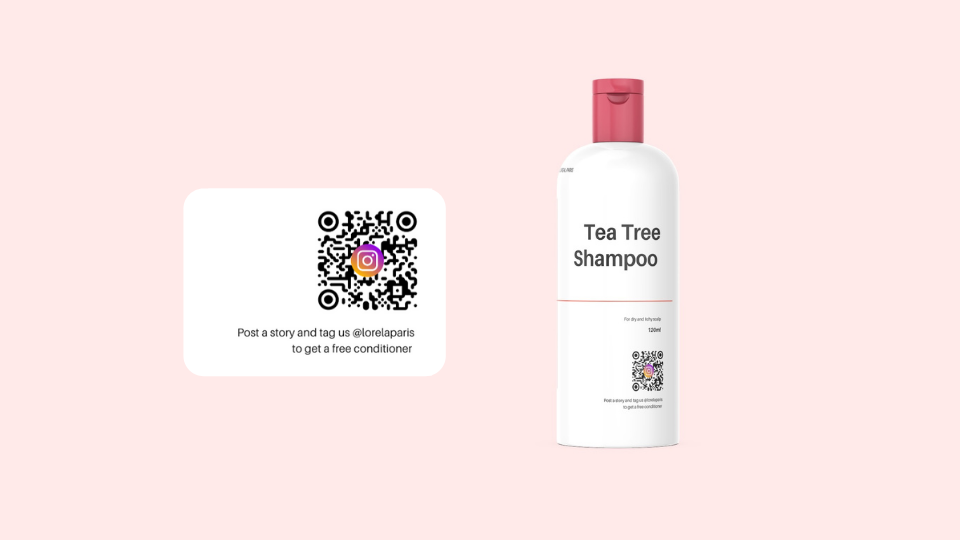
Online branded communities
According to Vanilla Forum’s report, 58% of online communities say their consumers are more loyal to the brand because of its community.
Leverage your beauty brand’s online community to retain consumers and build stronger relationships with them.
Enhance your community strategy by adding QR Codes to in-store displays, beauty products, and checkout counters that link to your online community. This gives consumers more opportunities to interact with your brand and other consumers.
They can post product recommendations, reviews, unboxing videos, and ask or answer queries about your beauty products on your exclusive community platform.
Social media communities
The same strategy works for your social media communities as well.
With over 4.2 billion social media users worldwide, it serves as the ideal platform for community building and visual engagement.
A major fraction of brand marketing in the beauty industry is driven by influencers. Estée Lauder, a world-renowned beauty brand, spends 75% of its marketing budget on influencers.
But the fact of the matter is that every consumer is a social media influencer. Consumers posting on social media give you user-generated content. This user-generated content helps in nurturing existing consumers and gaining new ones.
Vanilla Forums’ report also indicates that 68% of online branded communities say their community helped generate new leads.
Let’s say your brand just launched a new shade of lipstick, and you want to promote it on social media with the help of consumers.
Embed a social media QR Code on beauty products with an action-driven frame text that says, “Scan to post Instagram story and get 20% off”.
Consumers can scan the QR Code to open Instagram and post a story of them wearing the lipstick and also tag the brand. After doing this, they’ll receive their coupon code either via Instagram or any other channel.
Providing these rewards to consumers nudges them to take action and promote your brand. This grabs the attention of other potential consumers who now want to try your product.
This helps your brand cut down on marketing spend, foster long-term brand loyalty, and create new leads.
Added tip – Another valuable incentive you can provide to consumers is early access to a new product pre-launch with an early bird discount.
All the consumer would have to do is refer your brand to, let’s say, five friends and get them to download your brand-owned app.
This drives the number of app downloads, increases lead generation and significantly improves brand advocacy.
How to create QR Codes for beauty brands
Step 1: Log on to the Uniqode dashboard
Log on to the Uniqode dashboard and select +Create QR Code.

Step 2: Select QR Code type
Select a QR Code campaign from the ones listed.

Step 3: Customize QR Code
Select a predefined template, customize the QR Code’s eyes, add a logo, pick a data pattern, add a background and a call-to-action frame.

Click Next.
Step 4: Download QR Code
Your QR Code is ready. Download it in any of the five available formats – PNG, JPG, SVG, EPS, and PDF.

Do consumers scan QR Codes on beauty products?
Since mobile adoption reigns supreme in today’s world, more consumers prefer accessing information using their smartphones. QR Codes have become an integral part of this experience, with 59% of users scanning a QR Code daily, according to our State of QR Code Report.
Beauty products are very high in demand. A QR Code on a beauty product adds value to the overall retail experience for consumers, and this is something that wouldn’t go unnoticed by them.
Brands like L’Oreal, Smashbox, Sephora, and the like leverage QR Codes in their marketing campaigns and yield measurable results for the same.
Moreover, Android and iOS are making updates to make smartphones more compatible with QR Code scanning.
This will further increase QR Code adoption and consumers will be further inclined towards scanning QR Codes on beauty products.
How to improve engagement using QR Codes for beauty brands – Best practices
#1. Pick the right QR Code size and format
Your QR Codes should be the right size so that they’re readable by smartphones.
The size of your QR Code should be: QR Code Size = Scanning Distance/10, where the scanning distance is the distance between the QR Code and your smartphone.
Your QR Code should be at least 1 cm x 1 cm in size to be readable by most smartphones.
You also need to pick the correct QR Code format based on your requirements. Selecting formats such as PNG or JPG isn’t recommended since it can result in distorted and blurred QR Codes once you increase its size.
We recommend you download your QR Code in formats such as EPS and SVG since they’re resolution-independent and scalable. You can resize your QR Codes without the worry of distortion and pixelation.
Uniqode’s QR Code generator offers scalable vector formats like SVG, EPS, and PDF for your QR Codes.
Check out QR Code printing guidelines
#2. White-label and customize your QR Code
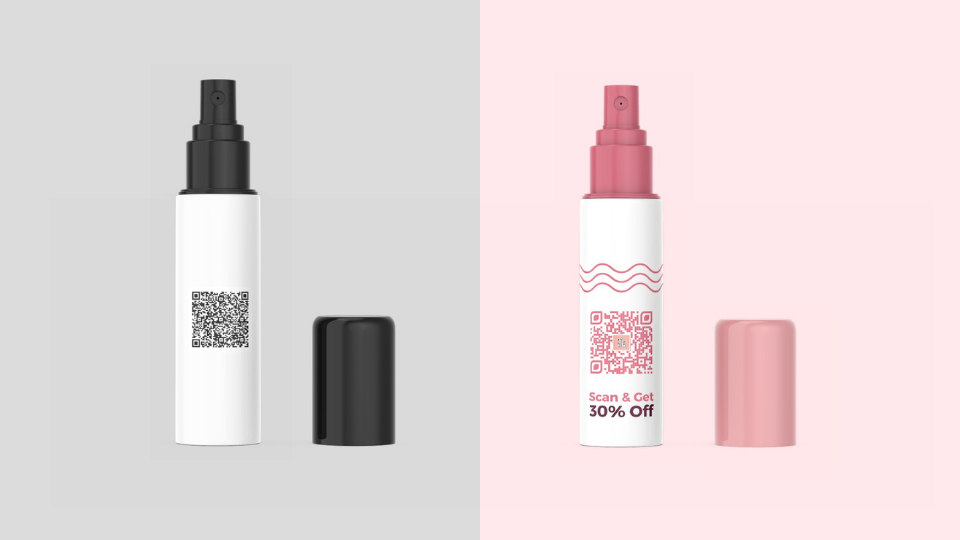
You can customize and modify your QR Codes to be consistent with your branding. Add a logo, change the color scheme, and add a call-to-action frame text to appeal to consumers and grab their attention.
Consistent branding will improve brand recall and increase recognition among consumers. According to Forbes’ article, presenting a brand consistently across all platforms can increase revenue by up to 23%.
Moreover, it makes your QR Code stand out from the traditional, non-branded, black and white QR Codes.
#3. Know where to place your QR Code
QR Code placement is a crucial aspect for influencing purchase decisions and driving consumer interactions.
If you have a newly launched beauty product, place the QR Code on the front of your packaging to gain valuable feedback about your product.
On the other hand, if your beauty product is mature, place the QR Code on the back to increase usage and understand consumers better.
#4. Compare and match the benchmark for QR Code scans
Once you’ve launched your QR Code campaign, it’s always a good practice to compare your results with a benchmark. This will help you understand if your campaign is moving in the right direction.
For a period of three months, achieving an average of over 800 QR Code scans daily is a reasonable benchmark to match your campaign to. This number would vary depending on the duration of your campaign.
Suppose your QR Code campaign surpasses the benchmark. In that case, it means that your marketing strategy is performing well and can lead to better results with further optimizations as you scale up.
#5. Utilize dynamic QR Codes for campaign variations and analytics
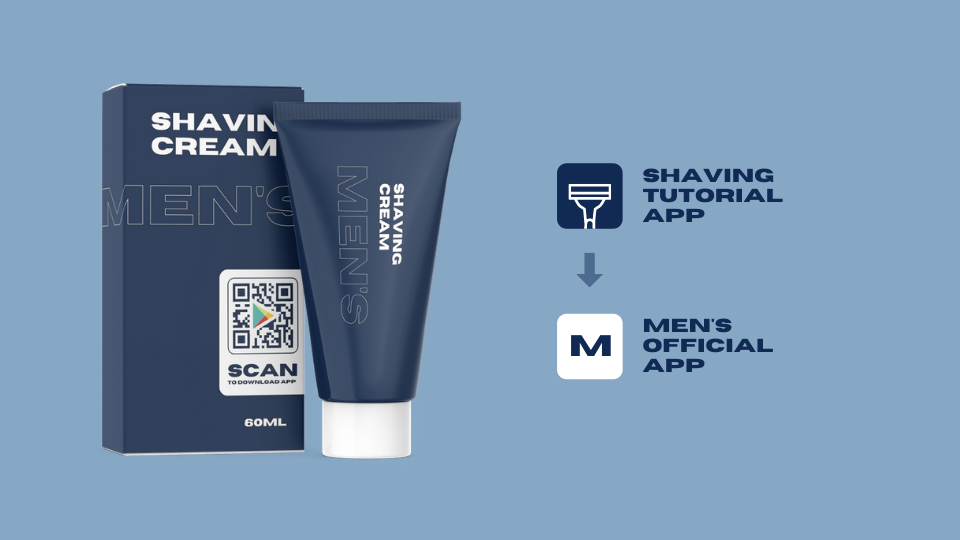
When running a QR Code campaign for your beauty brand, you need to run an analysis to assess your campaign’s performance and effectiveness.
Dynamic or changeable QR Codes are both editable and trackable in nature. They come with an in-built analytics module that allows you to track the number of scans, locations, and devices used.
You can experiment and try out different campaign variations using dynamic QR Codes, analyze each one, and figure out which one works best.
You wouldn’t need to worry about reprints and redistributions since the changes are reflected instantly in your campaigns.
Uniqode – the one-stop solution for promoting your beauty brand
A robust, end-to-end QR Code solution revolutionizes the way consumers interact with your beauty brand and helps you stay relevant with today’s mobile-first market.
Uniqode has worked with beauty brands like Maesa and Davines to aid them in digitizing their marketing strategies.
Uniqode’s QR solution is scalable, affordable, and equipped with an in-built analytics module to help your beauty brand enhance its marketing strategy or create a new one and achieve significant growth for the same.







